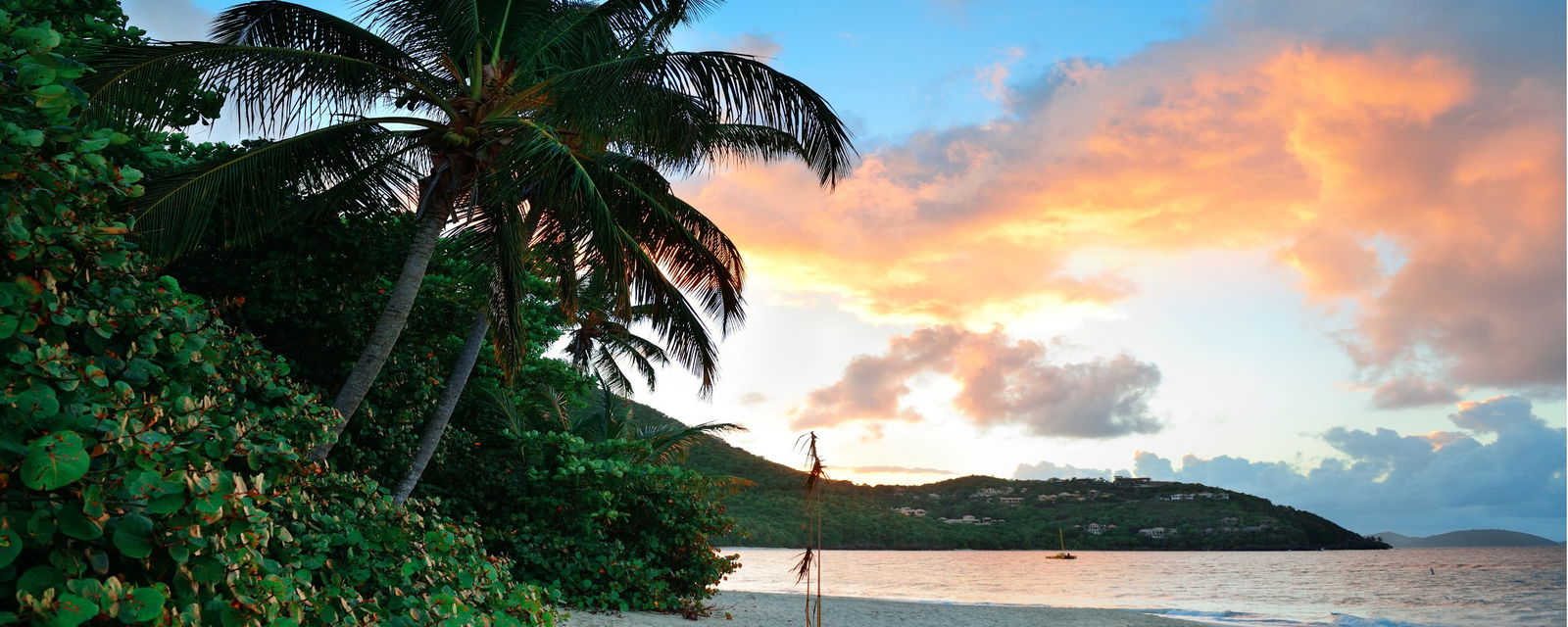


With the majority of this island protected as a national park it’s no wonder why Saint John will be the immersive nature experience that doesn’t always present itself on Caribbean vacations. Follow our recommendations by staying in ecolodges while here and exploring natural destinations on the island.
Two thirds of Saint John Island make up the Virgin Islands National Park. There are hiking trails, reefs to snorkel, and even ancient petroglyphs to check out. There are programs guided by rangers which you can sign up for and will include a presentation covering fascinating topics such as how wildlife recovers from hurricanes in history. Also, there is a sea turtle nesting site heavily monitored where you can learn more about the interesting creatures.
This free public beach can be quite busy with cruisers so we recommend visiting on non-port days. Snorkeling beginners love the Underwater Trail which is an easy snorkeling route. Unfortunately, hurricane Irma destroyed much of the coral in this area leaving behind habitat suitable for only small fish. Worth the activity if only to gain comfort snorkeling before taking a boat trip to more teeming areas.
With the Virgin Islands National Park located here you can bet your visit will be wildly nature and wildlife focused. Commit to the experience and fully immerse yourself by booking an ecolodge. Ecolodges are built with sustainability as the priority and will often situate the lodge on boarded walkways and raised floors. Why? So, the indigenous wildlife can scurry under the boardwalks at their leisure without fear or threat from humans. Even the typical city-person can find appreciation in nature at an ecolodge.

Saint John's winter, from December to February, offers warm and pleasant weather with temperatures ranging from the mid-70s to low 80s Fahrenheit. It's an ideal time to visit this picturesque island in the U.S. Virgin Islands as it allows for enjoyable beach days and outdoor adventures. Winter is perfect for exploring the Virgin Islands National Park, which covers two-thirds of the island and offers pristine beaches, hiking trails, and historic ruins.

Spring in Saint John, from March to May, brings slightly warmer temperatures with highs in the low to mid-80s Fahrenheit. The island's landscapes remain green and lush from the previous rainy season. Spring is ideal for snorkeling or diving at popular spots like Trunk Bay and Cinnamon Bay, where visitors can marvel at vibrant coral reefs and abundant marine life.

Saint John's summer, from June to August, marks the beginning of the rainy season. While it can be hot and humid with temperatures in the mid-80s to low 90s Fahrenheit, it also provides a refreshing respite from the dry season. Summer offers opportunities for experiencing local culture and attending events like the St. John Festival in July, featuring parades, music, and cultural performances. Visitors can also take boat tours to explore nearby cays and enjoy kayaking in the mangrove forests.

Fall in Saint John, from September to November, is the peak of the hurricane season. The weather remains warm and humid, with temperatures ranging from the mid-70s to low 80s Fahrenheit. Despite the risk of storms, fall is an excellent time to experience the island's natural beauty and tranquility with fewer tourists around. Visitors can take advantage of the low season to enjoy quieter beaches and hike along scenic trails like the Reef Bay Trail. Fall is also an ideal time to immerse in local art and crafts at art galleries and studios across the island.
